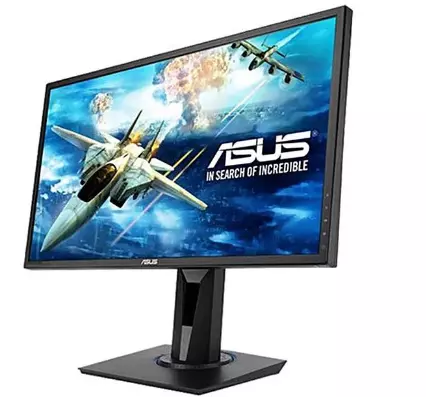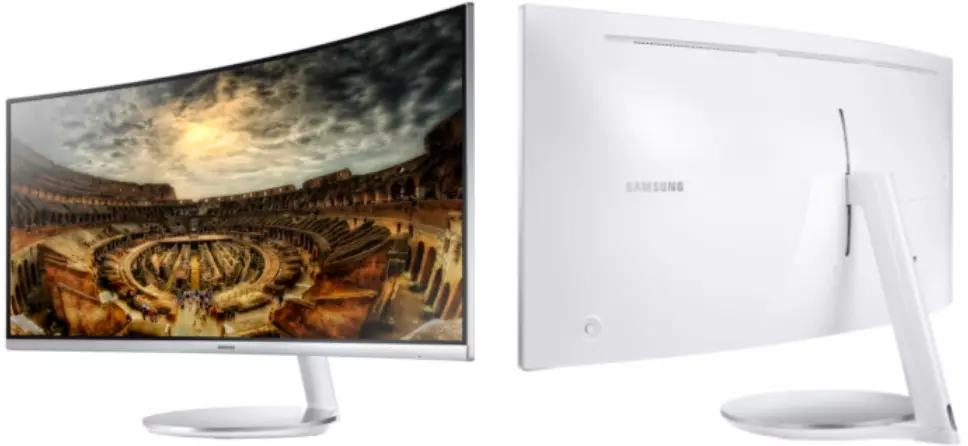A monitor is an essential part of the computer system that acts as a display screen that provides graphic and pictorial output from the computer. Also known as an electronic output device, it can display videos, graphic information, texts, and images that are all generated by the computer.
Today’s computer monitors have evolved from the ancient Cathode Ray Tube(CRT) that featured colorless exhibitions to efficient screen technologies such as the LED and LCD types. Consequently, this has translated to lighter, proficient and better display monitors that occupy less space.
Are Desktop Monitors better for your Eyes?
Typical modern workplaces need premium computer systems. Even more worrying is the fact that children are not left behind when it comes to digital device exposure. Statistics reveal that children in developed countries look at screen monitors at least 2 hours a day.
Desktop monitors are better for your eyes compared to laptop screens. However, as much as computer monitors are crucial in myriad ways, eye strain is bound to occur especially if they are used for long hours. Apart from headaches and neck pains, blurry vision is another dreaded impact of frequent monitor usage.
A bigger percentage of users, especially those who spend extended time staring at screens end up suffering from eye strain and other related issues.
Digital eye strain caused by the use of computer monitors causes dry eyes, eye fatigue, and discomfort. There are also cases when users have complained of headaches, red eyes, eye trembling, and shoulder pains.
Instances when Desktop Monitors Strain the Eyes
It is important to know that some occasions can aggravate the impact of monitor usage. Here are some of the cases:
- Using the monitor when you are already tired or stressed
- Having eye problems or when experiencing poor vision
- Using your computer in an environment that is not well lit
- Handling a single task for a prolonged period of time
- Not blinking as frequently as possible when staring at the monitor
- Sticking to a poor posture for a long time
- Using a monitor whose light setting has not been adjusted properly
- Prolonged exposure to the light that digital monitors emit
- Being too close to the monitor
Tips to Reduce Eye Strain Working on Computers
Nevertheless, since the use of these devices at a workplace is almost inevitable, giving up is not an option. Here are plausible measures you can take to minimize eye strain:
1. Apply the 20-20-20 tenet
As discussed earlier, engaging in a single activity on your computer for long is not advisable especially when there is no break. As such, looking away frequently or engaging in a different activity every 20 minutes is helpful.
Ensure whatever you are focusing on is 20 feet away and ensure that you distract yourself for at least 20 seconds.
If you are in an enclosed room, a walk outside the house to enjoy the natural light for a few minutes will do the trick. More significantly, your breaks should involve standing up and stretching of the arms, shoulders or neck to reduce tension.
2. Proper office lighting
As usual, lighting is significant when using a computer desktop. Too much light, whether artificial or natural, is bound to intensify the glare on your screen.
Consider closing blinds partially if you are in an office set up where there is too much light. If you are in harsh lights, ensure they are off.
Alternatively, position the screen strategically to avoid direct sunlight that will spell problems for your eyes.
In order to do away with exterior light, the shades, blinds, and drapes should all be closed. The use of low-intensity bulbs will also help minimize interior lighting.
As a computer user, you can concur that your eyes are safer when your monitor is not placed under an overhead fluorescent lighting system. In this case, it is advisable to use an indirect source of light such as floor lamps.
3. Screen positioning
The distance between the user and the monitor device can determine the eye strain level. Ensure you are staring at your monitor while at a proper distance and position.
Essentially, the monitor should be at least your arm’s length from the eyes. The height positioning of the screen should be at the same level as your eyes and not above.
4. Screen display settings
Staring at a bright screen for long hours is not friendly to the human eyes. Rightly so, computers have settings meant to regulate the backlight and brightness. These settings have adjustments that are quite influential in reducing eye strain.
To start with, the brightness level of the monitor should be adjusted so that it is at the same level as the surrounding brightness level of the office or workstation.
Secondly, reading or typing of lengthy documents needs the right contrast as well as text size. In most cases, black on a white background is the most recommended for maximum comfort.
5. Use of eyewear and eye drops
With the help of a qualified doctor, special eyewear can be prescribed to contain eyestrain. Apart from eye devices and lenses with tints, eye therapy is also recommended.
On the other hand, eye drops can also help in enhancing frequent blinking. Blinking less as a result of intense focus causes eye irritation and dryness.
6. Upgrade your computer monitor
The ancient CRT monitors emit a lot of light and can also display bad images which will end up forcing the user to strain.
Needless to say, it is advisable to switch to modern LED flat screens that feature an anti-reflective front. Unlike the ancient CRT desktop monitors, these models have what it takes to display sharp images that have no flicker.
7. Consider using anti-glare filters or glasses
These filters act as a barrier to minimize the level of light that reflects from your computer monitor. As such, the user will enjoy a better viewing experience with less strain and eye fatigue.
Alternatively, you can opt for anti-glare glasses. These are special glasses fitted with a coat to protect the user’s eyes from light reflections and brightness. The glasses are appropriate for desktop computers, laptops, and cell phone users.
8. Frequent blinking
Eye dryness and irritation is some of the reasons why you may suffer from eye strain when using your computer desktop.
To avoid this, blinking frequently will help to moisten the eyes. The majority of computer users blink less when staring at the screen.
When working, complete blinking is advisable as opposed to partial lid-closing of the eyes. When you are not blinking, the tears that coat the outer surface of the eyes tend to evaporate faster causing dry eyes. This puts you at a greater risk of suffering problems linked with eye dryness such as eye strain.
A Review Of The 3 Best Computer Monitors For Eye Strain
Manufacturers have come up with impeccable computer monitors that feature eye-caring technological advancements. If you are looking for one that can shield your eyes from adverse effects, below are 3 of the best:
1. ViewSonic-VX2457-MHD

Eye protection and user safety is what you will get when you purchase the ViewSonic VX2457.
It boasts of a non-flicker technology that keeps you safe, even when you use it for a long time.
The wide viewing angles and the blue light filter of this monitor is all you need to stay away from unnecessary headaches and eye strain.
Other notable features of this eye care LCD monitor include a 1920 x 1080 resolution, a 24-inch size screen, and slim bezels all ideal for professional tasks including gaming.
2. ASUS VG245H

This 24-inch screen features an IPS panel technology offering the best color quality.
The response time of the monitor has further been enhanced by the presence of nematic panels.
To protect your eyes, the monitor has a non-flicker display that ensures there is minimal eye strain and fatigue.
3. Samsung CF791 monitor
This curved monitor offers an immersive experience and a more comfortable field view.

The monitor comes with built-in speakers for users to enjoy games, music, and movies.
Whether you want to browse the web or watch movies, the CF791 has a 100Hz refresh rate and a superb resolution of 3440 x 1440 that ensures you enjoy better viewing.
This marvelous ultra-wide 34 inch LCD monitor produces uniform colors and dark scenes.
In conclusion, there is no doubt that frequent use of desktop monitors will eventually lead to eye strain.
If the effects are severe or last for a long time, engaging your doctor is inevitable so that it does not become a serious problem. Specialized lenses can be prescribed to protect you from the adverse effects of blue light.